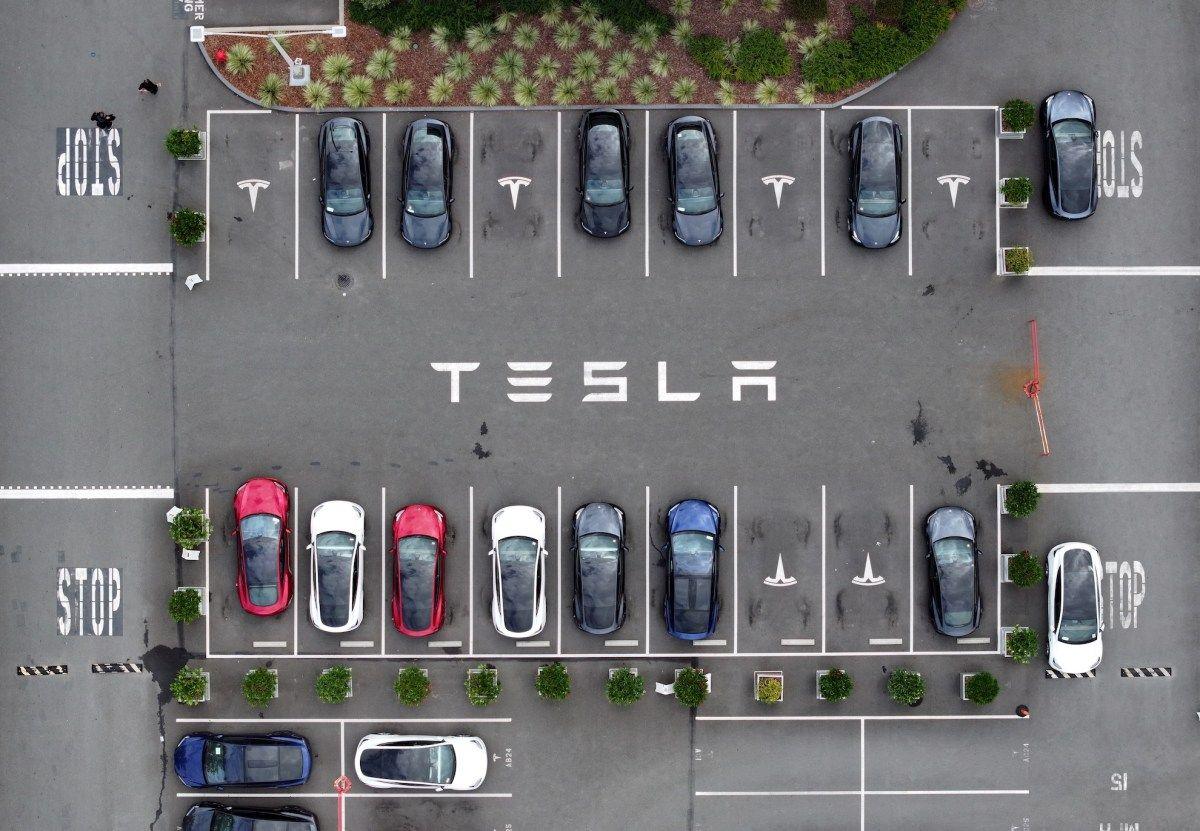Five Obstacles Hindering the Widespread Adoption of Driverless Cars
2 Sources
2 Sources
[1]
Five reasons why driverless cars probably won't take over your street any time soon
University of Stirling provides funding as a member of The Conversation UK. The UK government has launched a consultation on driverless cars, ahead of on-the-road trials of the vehicles next year. It has now been more than a decade since the prospect of driverless cars on public roads emerged, and prototypes and robotaxi fleets such as Waymo and Cruise replaced human drivers with artificial intelligence (AI). But ten years on, and with self-driving cars increasingly common in the US and China, significant obstacles still stand in their way in the UK. Despite rapid advances in the tech, other aspects of the driverless journey are still to catch up. Here are five key reasons why autonomous cars are unlikely to take over your local roads any time soon. 1. Uncertainties around safety One of the main benefits of rolling out driverless cars is to increase traffic safety by eliminating driver errors. In the US, the National Highway Traffic Safety Administration reported in 2018 that more than 90% of serious crashes were due to human error. But there is not yet converging evidence to support the idea that AI taking over from human drivers can make roads safer. On the other hand, there is evidence that adverse weather conditions, road design, traffic control systems and mixed traffic (that is, human-driven and driverless cars) can degrade the performance of those vehicles. Anomalies in driving patterns and frequent rear-end crashes involving self-driving technologies could indicate the AI algorithms are still far from perfect. 2. Regulations and legislation falling behind Substantial investment in research and development of self-driving technologies has led to a fast-growing and innovative industry. On the other hand, legislation and regulation processes often tend to be slower. These involve multiple stages including drafting, consultation, debate, committee reviews, voting and sometimes judicial review. The UK's Automated Vehicles Act provides a framework for the deployment of driverless vehicles. But the legal codes and mechanisms are still evolving. This is also true of data privacy and cybersecurity. For now, there is insufficient legislation governing who can own telematics and vehicle data or how they can be used. Such a widening lag has implications for the mass rollout of driverless cars, and has a direct impact on insuring them. 3. The insurance industry isn't ready Scarce data, combined with ambiguities in legislation and regulations, means insurance companies face a new set of challenges. These include making sense of where liability lies, developing new insurance models and adapting their premiums as the types of claim evolve. In some countries, including the UK, the liability for levels four and five of autonomous driving (very highly automated and fully automated) is shifting from human drivers in conventional vehicles to the manufacturer. Although the insurer pays first, they can recover costs from the tech provider later. New risk factors such as cybersecurity further complicate the insurance landscape. Driverless cars are designed to communicate with infrastructure and even other vehicles to decide their routes and avoid collisions. This can open the door to unlawful modifications, hacking or privacy breaches. 4. Ethical dilemmas Heavy traffic and the presence of other road users could lead to scenarios where a crash is inevitable. This would require programmers to design crash severity algorithms that include moral decision-making into autonomous systems. In simple terms, programmers are effectively being asked to write codes that assign value to human lives - an ethical minefield that has yet to be resolved in either academia or industry. This echoes the "trolley problem" (a thought experiment about killing one person to save others) but with real-world legal and moral significance. It poses further legal and regulatory questions that could further slow the progress of legislation. Complicating things further is the opaque, black-box nature of AI algorithms. 5. Changing business models Technology developers such as Waymo and Zoox offer only driverless rides and don't sell vehicles. The recent move by Tesla to launch a robotaxi service in Austin, Texas, also indicates a shift from selling cars to "mobility as a service", even by car manufacturers. In some societies like the US, there is resistance among consumers to relinquishing car ownership due to higher car dependency. This mismatch between the business models of the makers of driverless cars and consumer preferences presents another significant barrier to widespread adoption. Even if the technical obstacles are removed, these deeply held sentiments about the nature of mobility may prevent consumers abandoning private vehicles. Until the technical, legal, ethical and commercial challenges are addressed, the widespread rollout of driverless vehicles will remain more of a long-term vision than an immediate reality. Get your news from actual experts, straight to your inbox. Sign up to our daily newsletter to receive all The Conversation UK's latest coverage of news and research, from politics and business to the arts and sciences.
[2]
Five reasons why driverless cars probably won't take over your street any time soon
The UK government has launched a consultation on driverless cars, ahead of on-the-road trials of the vehicles next year. It has now been more than a decade since the prospect of driverless cars on public roads emerged, and prototypes and robotaxi fleets such as Waymo and Cruise replaced human drivers with artificial intelligence (AI). But ten years on, and with self-driving cars increasingly common in the US and China, significant obstacles still stand in their way in the UK. Despite rapid advances in the tech, other aspects of the driverless journey are still to catch up. Here are five key reasons why autonomous cars are unlikely to take over your local roads any time soon. 1. Uncertainties around safety One of the main benefits of rolling out driverless cars is to increase traffic safety by eliminating driver errors. In the US, the National Highway Traffic Safety Administration reported in 2018 that more than 90% of serious crashes were due to human error. But there is not yet converging evidence to support the idea that AI taking over from human drivers can make roads safer. On the other hand, there is evidence that adverse weather conditions, road design, traffic control systems and mixed traffic (that is, human-driven and driverless cars) can degrade the performance of those vehicles. Anomalies in driving patterns and frequent rear-end crashes involving self-driving technologies could indicate the AI algorithms are still far from perfect. 2. Regulations and legislation falling behind Substantial investment in research and development of self-driving technologies has led to a fast-growing and innovative industry. On the other hand, legislation and regulation processes often tend to be slower. These involve multiple stages including drafting, consultation, debate, committee reviews, voting and sometimes judicial review. The UK's Automated Vehicles Act provides a framework for the deployment of driverless vehicles. But the legal codes and mechanisms are still evolving. This is also true of data privacy and cybersecurity. For now, there is insufficient legislation governing who can own telematics and vehicle data or how they can be used. Such a widening lag has implications for the mass rollout of driverless cars, and has a direct impact on insuring them. 3. The insurance industry isn't ready Scarce data, combined with ambiguities in legislation and regulations, means insurance companies face a new set of challenges. These include making sense of where liability lies, developing new insurance models and adapting their premiums as the types of claim evolve. In some countries, including the UK, the liability for levels four and five of autonomous driving (very highly automated and fully automated) is shifting from human drivers in conventional vehicles to the manufacturer. Although the insurer pays first, they can recover costs from the tech provider later. New risk factors such as cybersecurity further complicate the insurance landscape. Driverless cars are designed to communicate with infrastructure and even other vehicles to decide their routes and avoid collisions. This can open the door to unlawful modifications, hacking or privacy breaches. 4. Ethical dilemmas Heavy traffic and the presence of other road users could lead to scenarios where a crash is inevitable. This would require programmers to design crash severity algorithms that include moral decision-making into autonomous systems. In simple terms, programmers are effectively being asked to write codes that assign value to human lives -- an ethical minefield that has yet to be resolved in either academia or industry. This echoes the "trolley problem" (a thought experiment about killing one person to save others) but with real-world legal and moral significance. It poses further legal and regulatory questions that could further slow the progress of legislation. Complicating things further is the opaque, black-box nature of AI algorithms. 5. Changing business models Technology developers such as Waymo and Zoox offer only driverless rides and don't sell vehicles. The recent move by Tesla to launch a robotaxi service in Austin, Texas, also indicates a shift from selling cars to "mobility as a service", even by car manufacturers. In some societies like the US, there is resistance among consumers to relinquishing car ownership due to higher car dependency. This mismatch between the business models of the makers of driverless cars and consumer preferences presents another significant barrier to widespread adoption. Even if the technical obstacles are removed, these deeply held sentiments about the nature of mobility may prevent consumers abandoning private vehicles. Until the technical, legal, ethical and commercial challenges are addressed, the widespread rollout of driverless vehicles will remain more of a long-term vision than an immediate reality. This article is republished from The Conversation under a Creative Commons license. Read the original article.
Share
Share
Copy Link
Despite a decade of development, autonomous vehicles face significant challenges in safety, regulation, insurance, ethics, and business models, delaying their widespread adoption on UK roads.
The Promise and Challenges of Autonomous Vehicles
As the UK government prepares for on-the-road trials of driverless cars next year, the technology faces significant obstacles that may delay its widespread adoption. Despite over a decade of development and the increasing presence of self-driving cars in the US and China, several key factors are hindering their integration into UK roads
1
2
.Safety Concerns and Technological Limitations

Source: The Conversation
One of the primary motivations for developing autonomous vehicles is to enhance traffic safety by eliminating human error. The National Highway Traffic Safety Administration in the US reported that over 90% of serious crashes in 2018 were due to human error
1
. However, there is currently insufficient evidence to conclusively prove that AI-driven vehicles are safer than human drivers.Autonomous vehicles face challenges in adverse weather conditions, complex road designs, and mixed traffic scenarios where both human-driven and driverless cars coexist. These factors can significantly impact the performance of self-driving technologies. Moreover, anomalies in driving patterns and frequent rear-end collisions involving autonomous vehicles suggest that AI algorithms still require substantial improvement
1
2
.Regulatory and Legislative Hurdles
While the autonomous vehicle industry has seen rapid growth and innovation, legislation and regulation have struggled to keep pace. The UK's Automated Vehicles Act provides a framework for deploying driverless vehicles, but legal codes and mechanisms are still evolving, particularly in areas such as data privacy and cybersecurity
1
.The lack of comprehensive legislation governing telematics and vehicle data ownership and usage presents a significant barrier to the mass rollout of driverless cars. This regulatory gap also directly impacts the ability to insure these vehicles effectively
2
.Insurance Industry Adaptation
The insurance sector faces new challenges in adapting to the era of autonomous vehicles. With limited data and ambiguous legislation, insurers must grapple with determining liability, developing new insurance models, and adjusting premiums to reflect evolving claim types
1
.In countries like the UK, liability for highly and fully automated driving (levels four and five) is shifting from human drivers to manufacturers. This shift introduces new complexities, including potential cybersecurity risks associated with the interconnected nature of autonomous vehicles
2
.Related Stories
Ethical Dilemmas and Decision-Making

Source: Tech Xplore
The programming of autonomous vehicles raises significant ethical questions, particularly in scenarios where collisions are unavoidable. Developers must create algorithms that make moral decisions, essentially assigning value to human lives in critical situations. This ethical minefield remains unresolved in both academic and industrial circles
1
.The complexity of these ethical considerations is further compounded by the opaque nature of AI algorithms, posing additional legal and regulatory challenges that may further delay legislative progress
2
.Evolving Business Models and Consumer Preferences
The autonomous vehicle industry is witnessing a shift in business models, with companies like Waymo and Zoox offering driverless rides rather than selling vehicles. Even traditional car manufacturers like Tesla are exploring "mobility as a service" models, as evidenced by the launch of a robotaxi service in Austin, Texas
1
.However, this shift clashes with consumer preferences in car-dependent societies like the US, where there is resistance to relinquishing private vehicle ownership. This mismatch between industry direction and consumer attitudes presents another significant barrier to widespread adoption
2
.As these technical, legal, ethical, and commercial challenges persist, the widespread rollout of driverless vehicles remains a long-term vision rather than an immediate reality. The industry must address these multifaceted issues before autonomous cars can become a common sight on UK streets.
References
Summarized by
Navi
[1]
Related Stories
Recent Highlights
1
OpenAI releases GPT-5.2 AI model after code red memo targets Google's Gemini 3 threat
Technology

2
Disney invests $1 billion in OpenAI, licenses 200+ characters for Sora video generator
Technology

3
Disney accuses Google of massive copyright infringement through AI-generated character images
Policy and Regulation








